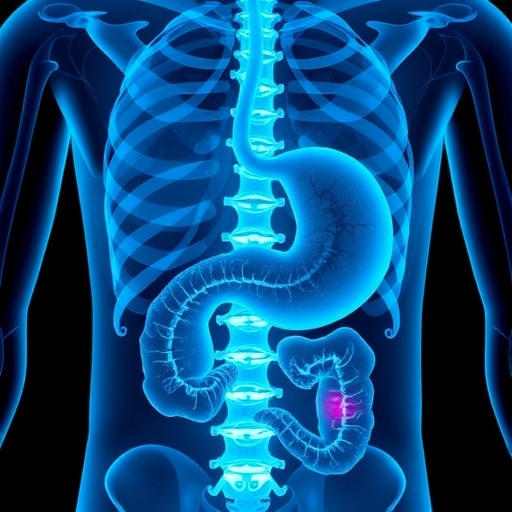
In the relentless pursuit of more effective treatments for complex diseases such as lung cancer and emerging viral infections like COVID-19, a unique class of drugs known as targeted covalent inhibitors (TCIs) has garnered significant attention. Distinguished by their ability to form robust covalent bonds with specific target proteins, TCIs revolutionize traditional drug design by offering increased potency and durable inhibition. Unlike conventional non-covalent inhibitors that rely primarily on reversible interactions, TCIs capitalize on irreversible covalent attachments to their protein targets, providing a mechanism for sustained therapeutic effect that can overcome resistance mechanisms often encountered in clinical settings.
The key parameter traditionally used to evaluate the effectiveness of these inhibitors is the inactivation efficiency rate, reflecting how rapidly a compound binds and covalently modifies its target protein. Intuitively, faster binding kinetics have been associated with higher drug efficacy, as quicker inactivation prevents the target protein from executing pathological functions. However, a groundbreaking study led by David Heppner and his team at the University at Buffalo challenges this conventional wisdom by demonstrating a nuanced reality: increasing the inactivation efficiency rate enhances drug potency only up to a certain threshold, beyond which no further benefits are observed.
This revelation emerged from careful experimentation involving 14 advanced targeted covalent inhibitor molecules aimed at the epidermal growth factor receptor (EGFR), a pivotal protein whose mutations drive uncontrolled cellular proliferation in various cancers. The research leveraged cellular assays to dissect the relationship between the kinetics of covalent bond formation and the ultimate biological outcomes within cancer cells. While initial increases in inactivation speed correlated with improved cellular inhibition, a plateau was reached where faster binding ceased to translate into greater efficacy. This phenomenon highlights an important caveat in the drug development pipeline: reliance on the inactivation efficiency rate alone can be misleading when prioritizing candidate compounds.
.adsslot_l6T8ZgvGSF{width:728px !important;height:90px !important;}
@media(max-width:1199px){ .adsslot_l6T8ZgvGSF{width:468px !important;height:60px !important;}
}
@media(max-width:767px){ .adsslot_l6T8ZgvGSF{width:320px !important;height:50px !important;}
}
ADVERTISEMENT
The implications of these findings are profound for medicinal chemistry and pharmacology. TCIs are constructed by appending a reactive chemical moiety—commonly referred to as a “warhead”—to a molecular scaffold designed to recognize and bind the target protein. The warhead facilitates covalent bond formation, compensating for molecules that might otherwise exhibit weak non-covalent affinity. Thus, TCIs effectively break the classical rules of drug design that emphasize high initial binding affinity, by creating a durable and irreversible interaction through chemical reactivity.
Heppner’s group underscored that beyond a certain point, increasing reactivity and inactivation efficiency ceases to provide meaningful differentiation among potent TCIs. In fact, accelerations in binding kinetics could alludes to potential pitfalls if used as the sole criterion for candidate selection. For example, among the molecules tested was a problematic metabolite of an already clinically approved drug. This metabolite exhibited fast inactivation kinetics but exhibited poor therapeutic promise, underscoring how reliance on a single metric can obscure important nuances in drug behavior.
In an effort to refine the drug discovery process, the researchers proposed a paradigm shift: a two-tiered design strategy that initially optimizes inactivation efficiency but subsequently incorporates broader parameters such as target selectivity. Selectivity is critical as it quantifies the drug’s ability to discriminate its intended molecular target from unrelated proteins, thereby minimizing off-target effects and associated toxicity. Integrating selectivity measurements ensures candidate compounds not only bind rapidly but also engage selectively with pathological proteins, improving therapeutic indices.
This approach aligns with the complex biochemistry underlying covalent inhibition, where molecular recognition and chemical reactivity must be finely balanced. Accelerating the rate of covalent modification without attention to specificity may enhance potency but also raise the risk of undesirable interactions and side effects. Consequently, a comprehensive evaluation framework that includes kinetic, thermodynamic, and cellular parameters is essential for identifying truly promising drug candidates.
The study’s methodology reflects a sophisticated interplay of chemistry and biology, utilizing both in vitro biochemical assays and cellular models to validate findings. Targeting EGFR, a receptor tyrosine kinase implicated in many tumor types, provided a biologically relevant platform due to its well-established role in cancer progression and as a validated therapeutic target. TCIs designed against mutant forms of EGFR present an invaluable opportunity to overcome resistance to existing therapies through covalent engagement, reaffirming the clinical relevance of refining their design.
Furthermore, this research contributes to streamlining one of the most resource-intensive aspects of drug development. The conventional process relies heavily on iterative synthesis and empirical testing, consuming vast amounts of time and financial investment. By offering a more nuanced framework for candidate evaluation, Heppner’s team aims to reduce attrition rates and expedite the identification of compounds with a balanced profile of potency and safety.
The notion that maximizing a single efficiency parameter is insufficient serves as a cautionary tale for drug developers. It compels a reevaluation of established heuristics and encourages the adoption of holistic optimization strategies. This mindset embraces the complexity of biological targets and acknowledges that efficacious drugs emerge at the intersection of multiple favorable characteristics rather than from singular optimization efforts.
Importantly, the study also highlights the value of interdisciplinary collaboration in advancing medicinal chemistry. Involving postdoctoral researchers, graduate students, and undergraduates, the team embodies the integration of fresh perspectives and diverse expertise necessary for tackling complex pharmacological challenges. This inclusive approach fosters innovation and propels the field toward more informed and systematic drug discovery practices.
As targeted covalent inhibitors continue to advance in clinical and experimental contexts, the insights gleaned from this investigation provide a critical lens through which their design and evaluation should be approached. Balancing the speed of covalent bond formation with comprehensive assessments of target selectivity and cellular efficacy promises to refine therapeutic development and improve outcomes for patients suffering from cancer, viral diseases, and beyond.
With ongoing support from the National Institutes of Health, the University at Buffalo team’s work exemplifies the rigorous scientific inquiry necessary to unlock new frontiers in drug discovery. By unraveling the sophisticated dynamics governing covalent inhibition, they pave the way for smarter, safer, and more effective medicines that respond adeptly to the intricate demands of human biology.
Subject of Research: Cells
Article Title: Profiling and Optimizing Targeted Covalent Inhibitors through EGFR-Guided Studies
News Publication Date: 13-Aug-2025
Web References: Journal of Medicinal Chemistry – DOI: 10.1021/acs.jmedchem.5c01661
References: Heppner D et al., American Chemical Society’s Journal of Medicinal Chemistry, 2025
Image Credits: Douglas Levere/University at Buffalo
Keywords: Targeted covalent inhibitors, EGFR, drug development, chemical bonding, medicinal chemistry, cancer therapeutics, binding proteins, selectivity, inactivation efficiency rate, molecular pharmacology, chemical reactivity, protein targeting
Tags: covalent inhibitor potency thresholdsCOVID-19 treatment innovationsdrug development for lung cancereffective treatments for viral infectionsimplications of drug kinetics on efficacyinactivation efficiency in drug designirreversible covalent bonds in medicinekinetic binding rates in pharmaceuticalsnovel approaches to complex disease treatmentovercoming drug resistance mechanismsprotein-targeted therapiestargeted covalent inhibitors





